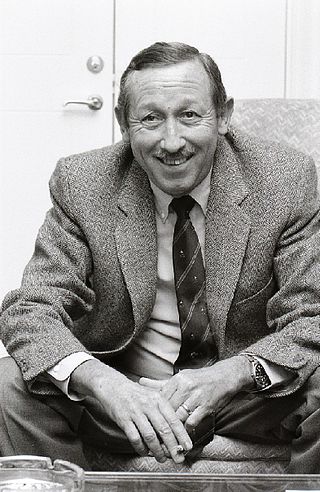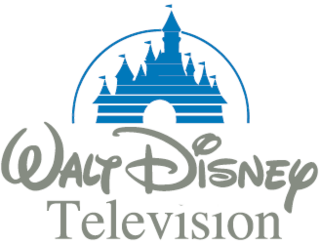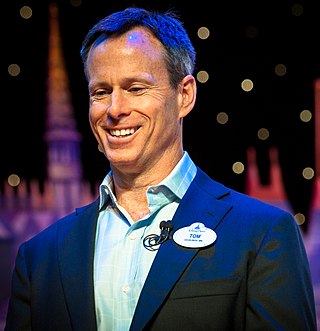The Superhighway Summit was held at the University of California, Los Angeles's Royce Hall on 11 January 1994. It was the first public conference bringing together all of the major industry, government and academic leaders in the field. It began the national dialogue about the information superhighway and its implications. [1] The conference was organized by Richard Frank of the Academy of Television Arts & Sciences, and Jeffrey Cole and Geoffrey Cowan, the former co-directors of UCLA's Center for Communication Policy. [2] It was introduced by former UCLA Chancellor, Andrea L. Rich. The keynote speaker was Vice President Al Gore.
Thirty leaders in the area of communications presided over the event, which had an attendance of over 1800 people. It was broadcast live on C-SPAN, E! Entertainment, and on the UCLA campus. [1]
The conference was given extensive coverage by Cynthia Lee and Linda Steiner Lee over two issues of UCLA TODAY (January 13 and 27, 1994). In the article "Gore Details Telecommunications Ideas," Lee and Lee gave an overview of the opening speech given by Vice President Gore. [6] They commented that "Vice President Al Gore outlined the Clinton Administration's proposals to reform the communications marketplace and challenged his audience to provide links from the so-called information superhighway to every classroom, library, hospital, and clinic in the country by the year 2000 [...] 'We have a dream for...an information superhighway that can save lives, create jobs and give every American, young and old, the chance for the best education available to anyone, anywhere,' Gore said." [7] During his talk, "Ernestine" (the fictional telephone operator created by Lily Tomlin for Rowan & Martin's Laugh-In ) made a surprise appearance. She complained "about the confusing and rapid transformation of communications technology. The Vice president laughingly assured Ernestine that the new technology would be simple to understand and available to all Americans." [7]
In the follow-up article, "CEOs Ponder Direction of Information Superhighway", Cynthia Lee stated that leaders at the conference noted that the future of the information superhighway was still uncertain. " 'Here we are, all ready to go cruising off down this new information superhighway,' said Jeffrey Katzenberg, Chairman of The Walt Disney Studios, during one of the panel discussions, 'and we really don't know where we are going. It's the first time we will be moving in a certain direction when we don't even know our final destination.' " [8] Geoffrey Cowan, the former co-director of UCLA's Center for Communication Policy, indicated that the key concept of the Information Superhighway was interactivity, or "the ability for the consumer to control it, to decide what they want to receive, and the ability of the technology to respond to highly sophisticated consumer demands." [8]
The participants underscored the point that the major challenge of the information superhighway would lie in access, or the "gap between those who will have access to it because they can afford to equip themselves with the latest electronic devices and those who can't." [8]
The National Information Infrastructure (NII) was the product of the High Performance Computing Act of 1991. It was a telecommunications policy buzzword, which was popularized during the Clinton Administration under the leadership of Vice-President Al Gore.

Michael Dammann Eisner is an American businessman and former chairman and chief executive officer (CEO) of The Walt Disney Company from September 1984 to September 2005. Prior to Disney, Eisner was president of rival film studio Paramount Pictures from 1976 to 1984, and had brief stints at the major television networks NBC, CBS, and ABC.

Roy Edward Disney KCSG was an American businessman. He was the longtime senior executive for the Walt Disney Company, which was founded by his uncle, Walt Disney, and his father, Roy O. Disney. At the time of his death, he held more than 16 million shares, and served as a consultant for the company, as director emeritus for the board of directors. During his tenure, he organized the ousting of two top Disney executives: Ron W. Miller in 1984 and Michael Eisner in 2005.
The information superhighway is a late-20th-century phrase that aspirationally referred to the increasingly mainstream availability of digital communication systems.

Jeffrey Katzenberg is an American film producer and media proprietor. He became well known for his tenure as chairman of Walt Disney Studios from 1984 to 1994. After departing Disney, he was a co-founder and CEO of DreamWorks Animation, where he oversaw the production of such animated franchises as Shrek, Madagascar, Kung Fu Panda, and How to Train Your Dragon. He has since founded a new media and technology company called WndrCo and was the founder of Quibi, a defunct short-form mobile video platform.

ABC Signature is an American television production studio that is a subsidiary of Disney Television Studios, a division of Disney Entertainment, which is a division of The Walt Disney Company. The studio is the production arm of the ABC television network, and started in 1950 as the television unit of Walt Disney Productions, which was later renamed Walt Disney Television as a separate company from Walt Disney Television Animation, in 1983, and launched a subsidiary, the first incarnation of Touchstone Television, established in 1985 and renamed ABC Studios in 2007. It adopted its current identity on August 10, 2020, after a merger between ABC Studios and the original ABC Signature Studios.

The original incarnation of Walt Disney Television was the name of the American television production division of The Walt Disney Company.

Franklin G. Wells was an American businessman who served as president of The Walt Disney Company from 1984 until his death in 1994.
The Walt Disney Studios is a major division of the Disney Entertainment business segment of The Walt Disney Company best known for housing its multifaceted film studio divisions. Founded on October 16, 1923 and based mainly at the namesake studio lot in Burbank, California, it is the seventh-oldest global film studio and the fifth-oldest in the United States, a member of the Motion Picture Association (MPA) and one of the "Big Five" major film studios.

Robert Allen Iger is an American media business executive who serves as chief executive officer (CEO) of The Walt Disney Company. He previously served as the president of ABC between 1994 and 1995 and the president and chief operating officer (COO) of Capital Cities/ABC, from 1995 until its acquisition by Disney in 1996. Iger was named president of Disney in 2000 and succeeded Michael Eisner as CEO in 2005, until his contract expired in 2020. He then served as executive chairman until his retirement from the company on December 31, 2021. At the request of Disney's board of directors, Iger returned to Disney as CEO on November 20, 2022, following the unscheduled and immediate dismissal of his appointed successor, Bob Chapek.

Esmond Cardon Walker, commonly known as E. Cardon Walker or Card Walker, was an American businessman who served as a top executive at Walt Disney Productions during the 1960s, 1970s, and 1980s. He was born in Rexburg, Idaho.

Disneytoon Studios (DTS), originally named Disney MovieToons and also formerly Walt Disney Video Premieres, was an American animation studio which created direct-to-video and occasional theatrical animated feature films. The studio was a division of Walt Disney Animation Studios, with both being part of The Walt Disney Studios, itself a division of The Walt Disney Company. The studio produced 44 feature films, beginning with DuckTales the Movie: Treasure of the Lost Lamp in 1990. Its final feature film was Tinker Bell and the Legend of the NeverBeast in 2015.

Disney Television Animation (DTVA) is an American animation studio that serves as the television animation production arm of Disney Branded Television, a sub-division of Disney Entertainment, which is a division of The Walt Disney Company. The studio was originally established on December 5, 1984, by Gary Krisel during the reorganization and subsequent re-incorporation of Disney following the arrival of then-CEO Michael Eisner that year.
Disney General Entertainment Content (DGEC), formerly ABC Group, Disney–ABC Television Group and the second incarnation of Walt Disney Television, is part of Disney Entertainment, a division of The Walt Disney Company that oversees its owned-and-operated television content, assets and sub-divisions.

Thomas Owen Staggs is an American business executive and investor. He is currently one of the co-founders and co-CEOs of Candle Media. He formerly worked at The Walt Disney Company for nearly 27 years, beginning in 1990, working in finance and later becoming the chief financial officer (CFO), then as chairman of Walt Disney Parks and Resorts Worldwide and finally as chief operating officer (COO). He also holds directorships on various company boards, including Spotify.

Al Gore is a former US Senator who served as the Vice President of the United States from 1993 to 2001. In the 1980s and 1990s, he promoted legislation that funded an expansion of the ARPANET, allowing greater public access, and helping to develop the Internet.

Thomas Schumacher is a theatrical producer, currently president of Disney Theatrical Group, the theatrical production arm of The Walt Disney Company.
Richard H. Frank is an American entertainment executive who served chairman of Walt Disney Television and Telecommunications and as president of the Disney Studios.

Waking Sleeping Beauty is a 2009 American documentary film directed by Disney film producer Don Hahn and produced by Hahn and former Disney executive Peter Schneider. The film documents the history of Walt Disney Feature Animation from 1984 to 1994, covering the rise of a period referred to as the Disney Renaissance.

The vice presidency of Al Gore lasted from 1993 to 2001, during the Bill Clinton administration. Al Gore was the 45th vice president of the United States, being twice elected alongside Bill Clinton in 1992 and 1996. Gore is considered to have been one of the most powerful and influential vice presidents in American history.